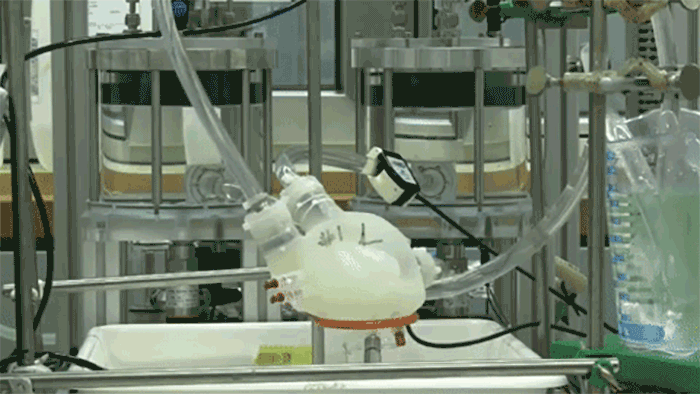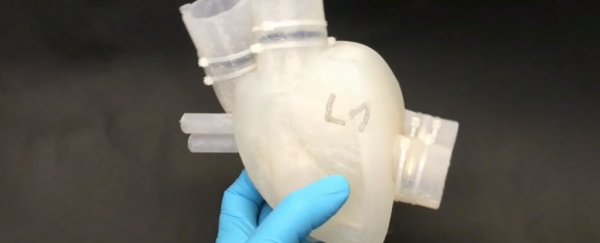Scientists have 3D-printed a soft, artificial heart made of silicone that beats almost like a human heart, putting us another step closer to replacing damaged human hearts without the need for a transplant.
With about 26 million people worldwide suffering from heart failure, and a global shortage of donors, being able to custom-make artificial hearts would be an invaluable solution to a perennial, long-term problem.
The team behind the artificial heart, from ETH Zurich in Switzerland, says its prototype heart can beat in a very natural way for about half an hour before the materials break down, and the researchers are working hard to improve their new invention.
"[Our] goal is to develop an artificial heart that is roughly the same size as the patient's own one and which imitates the human heart as closely as possible in form and function," says one of the team, Nicholas Cohrs.
The silicone heart features left and right ventricles or chambers, just like a human heart, as well as an additional chamber that acts as the heart's engine by driving the external pump.
 Credit: ETH Zurich
Credit: ETH Zurich
The idea is that pressurised air inflates and deflates this third chamber, which would drive blood through the ventricles – for the purposes of this study, a liquid with the same viscosity of blood was used.
Weighing in at 390 grams (13.8 ounces) and with a volume of 679 cubic centimetres (41 cubic inches), it's slightly heavier but about the same size as a normal human heart. it's hoped this artificial version can eventually replace mechanical pumps, which are always at risk of failure or causing complications in the body.
Right now these mechanical pumps are used while people recover from heart failure or wait for a donated heart to become available.
With each silicone heart only lasting for around 3,000 beats, the strength of the material and the performance of the heart need to be significantly increased – but having a soft, 3D-printed heart beating like a human one is a fantastic start.
"This was simply a feasibility test," says Cohrs. "Our goal was not to present a heart ready for implantation, but to think about a new direction for the development of artificial hearts."
If we can't replace this most crucial of organs with a 3D-printed version then perhaps there's hope in regenerating damaged heart tissue. Last month scientists explained how gene programming in a sea anemone could unlock a way of teaching human stem cells to replace heart tissue.
Meanwhile, earlier this year a team from Worcester Polytechnic Institute (WPI) used spinach leaves to generate functioning heart tissue, complete with veins that could transport blood.
We're still a long way off being able to replace or regrow the human heart – but it's exciting to think we're getting closer all the time.
The research has been published in Artificial Organs.
The scientists also published a video of their work which you can see below:
